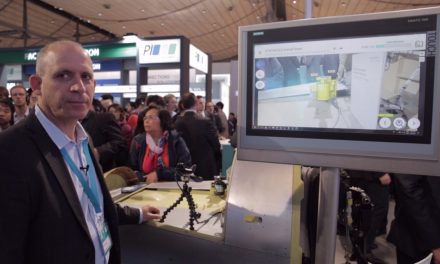Enabling Service-Based Revenue Through Industrial IoT

Industrial equipment manufacturers are grappling with staying competitive in today’s Internet of Things (IoT) connected environment. New service-based business models are becoming the norm, and companies without IoT-connected devices will be left behind. In a recent article, McKinsey & Company detailed how industrial automation’s value pools are shifting. While machinery hardware is growing at an annual CAGR of about 2%, the market for technical verticals that enable digitization and the ensuing service-based business model adoption of machinery is growing faster.
Cloud applications for industrial automation expect a CAGR of 14%, connectivity around 16%, and smart sensors around 20%. McKinsey warns that American and European organizations whose machines are not equipped to harness this growth will flounder as the increasing manufacturing share of developing market companies continues to minimalize hardware margins.
With IoT-connected capabilities, machinery manufacturers benefit from increased growth, revenue predictability, increased strength through economic cycles, and higher profits. These benefits come with challenges that include engineering skillsets, manufacturing capabilities, and security risks associated with connected equipment.
This blog will delve deeper into the benefits and challenges of the shift to a connected world and how Benchmark can provide solutions to help.
Benefits of Connectivity
Connectivity is expanding because of the vast benefits it offers to both equipment providers and their customers. Connectivity is synonymous with service-based business models that provide a lot of feedback and insight to providers and their customers, allowing a more collaborative interaction.
From the customer’s perspective, it’s clear why service-based business models are gaining such traction; they reposition the equipment supplier as a true business partner. Service models ensure that each company has the other’s best interests at heart, prioritizing machinery uptime over upsells. Connected machines help customers gain better insights driven by actual data that optimizes manufacturing efficiencies, quality, speed, and uptime.
Maintenance activities are critical for equipment providers’ customers who are cautious of the risks a mass downtime event poses for their bottom line. Depending on the complexity of equipment or the remoteness of operations from a central hub, customer organizations may require guarantees related to the uptime of machinery. Connected equipment can monitor the systems to allow proactive maintenance, making downtime periods minimal or even a thing of the past.
A service-based business model allows new additional service revenue streams to increase revenue growth from the manufacturer’s standpoint. The advanced new revenue streams that connectivity can enable include availability guarantees, advanced human-machine interaction capabilities, advanced analytics, business intelligence, and integrated solutions. These services help the machine equipment provider to take over support and provide even more value add to their customers. Such services will lead to longer-term relationships, stickier business, and a more significant revenue stream for the OEM. Service revenue streams also add a layer of predictability with consistent, recurring monthly service fees helping companies maintain business during economic cycles when equipment sales are down.
The benefit of increased margins is also realized with better insight into customer needs that can help reduce inventory. The feedback that a connected machine offer ensures maintenance is done on time, reducing failures and increasing uptime, and includes the side benefit of better customer satisfaction. Collected data also clarifies equipment use, which can help identify new products and features that are not used, leading to cost reductions on new product iterations.
Challenges in Converting to IIoT
Designing custom sensing solutions and digitized architectures to enable connectivity may be outside the OEM’s engineering team’s core competency. At a minimum, such solutions require expertise in connectivity, embedded electronics, and sensors. A lack of the right skillsets can result in useless data collection; Forrester notes that up to 73% of enterprise data goes unused. It is no doubt that trillions of IoT devices toil away collecting useless data not central to their mission. In addition, designing with a service-based model in mind is critical.
The reliability and intended use of parts within a design should dictate the recommended replenishment and service intervals. The software will need to predict and diagnose field issues and correctly flag when preventative maintenance should occur. If the engineering experience does not exist within the equipment manufacturer, new talent will need to be hired, or part of the engineering effort must be outsourced. Even if this expertise does exist within the company’s engineering team, they may not wish to focus the design team’s efforts in this area, having them concentrate on the core IP instead.
Another challenge is the security risk that connected devices pose. Cyber attacks are increasing; we see an unprecedented rise in ransomware and other attacks causing downtime, equipment damage, and even product defects. Security is even more critical in today’s environment and providing the proper protection for IoT deployments is paramount.
And lastly, manufacturing requirements may be a little different for legacy equipment requiring a manufacturer who is well versed in building connected devices. Experience building equipment with sensors, the ability to load software and do cloud configurations, system builds, and process automation are a few of the capabilities needed to produce high-quality connected machines.
Choosing the Right Manufacturing Partner
Benchmark offers comprehensive connected device design engineering and manufacturing services to accelerate the development of custom solutions and ensure successful production manufacturing.
Benchmark’s expertise in mechanical design, connectivity, lifecycle support, and maintainability and can augment your team when needed to provide a quality product in a short timeframe. We offer custom engagement models that allow you to focus on your core business while providing expertise in areas where you need help in capabilities or bandwidth. Our engineering teams have unique skillsets to add connectivity to legacy equipment, design IoT into new platforms, commercialize your products, and perform design for manufacturability, testability, and lifecycle analysis. One great example of our advanced IoT experience includes a secure sensor network for critical infrastructure.
Benchmark engineering does an initial risk analysis on connected machine designs to address the security challenges, including cyber security and privacy components. We offer a toolbox of solutions to mitigate both hardware and software security risks. Additionally, during development, we perform cyber-attack simulations on the product to ensure safety for the machine.
Benchmark’s global manufacturing locations help realize your products and get them to market on time. The next generation of smart manufacturing is being built on billions of sensors, highly capable embedded electronics, and diverse connectivity solutions. Our experience with a wide array of technologies within the connected ecosystem allows technological challenges to be overcome on anything from a single embedded module to a full-system integration from sensors to cloud built on Smart Gateway and IoT platforms.
Our full product lifecycle support is completed with aftermarket services, including repair, refurbishment, repurposing, and more, adding value for our partners to help you offer a seamless and positive experience for your customers. There are many benefits to an IoT-connected strategy for industrial equipment OEMs and their customers, but there are also challenges.












